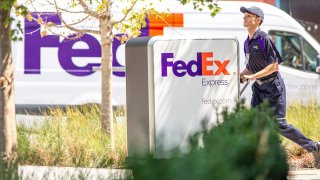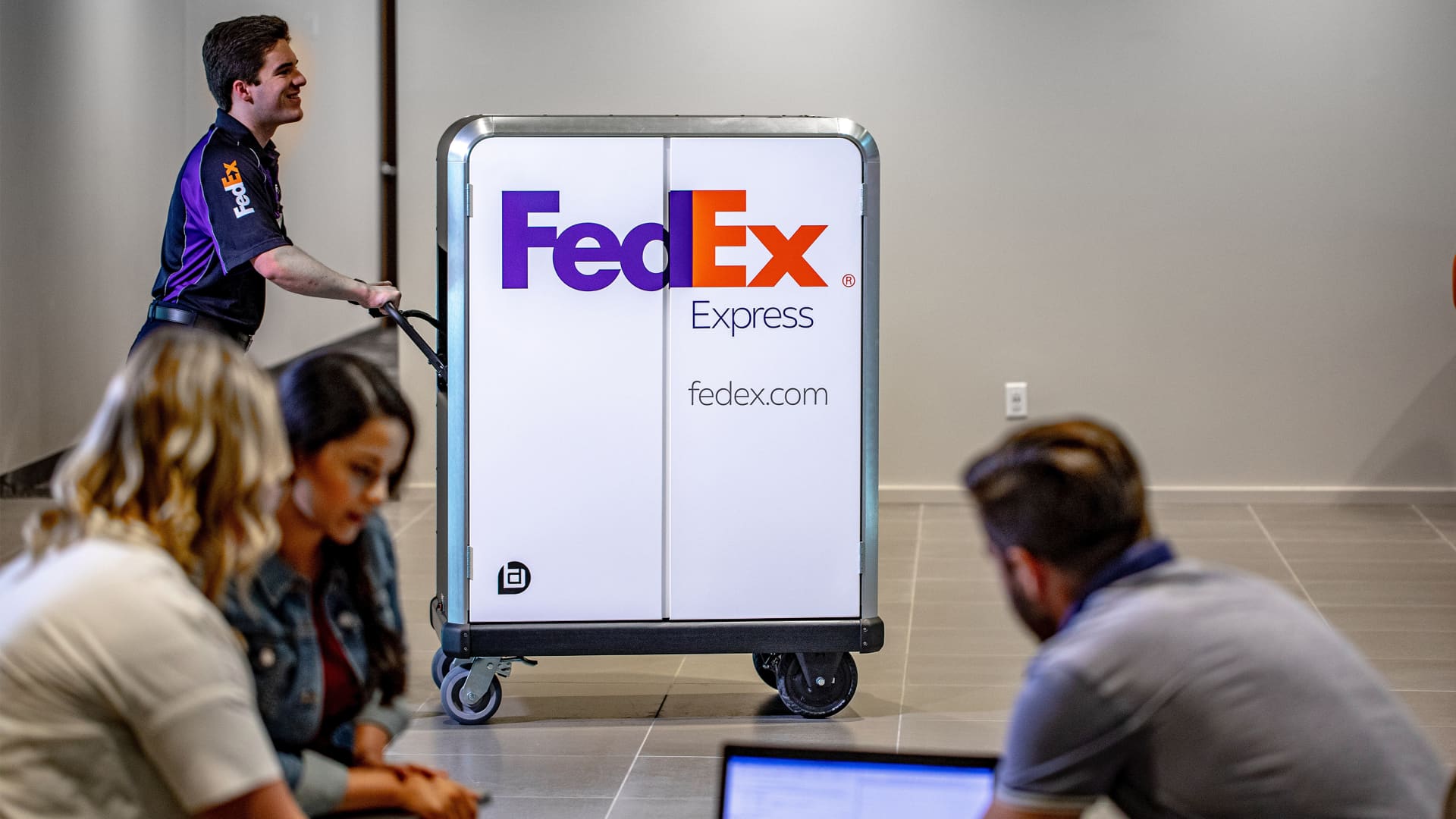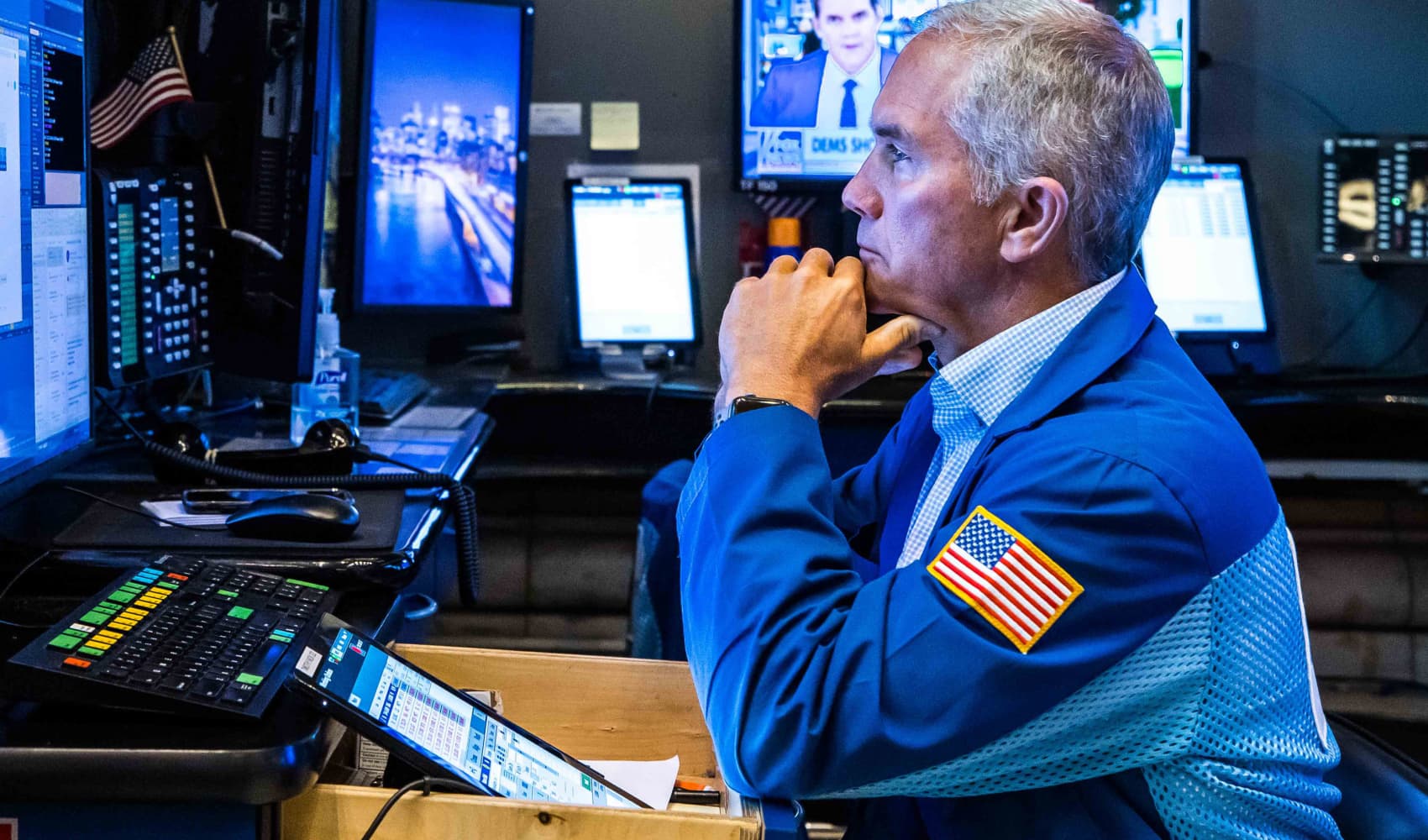
- FedEx plans to test electric carts to make deliveries on its signature Express routes in 10 U.S. and Canadian cities throughout 2022.
- The company hopes electric delivery carts will help address a major challenge it faces in every big city it serves: lack of parking.
- So far, the delivery giant has tested using the EP1 electric cart made by General Motors' BrightDrop in New York City and Toronto.
FedEx plans to test electric carts to make deliveries on its signature Express routes in 10 U.S. and Canadian cities throughout 2022.
The company hopes electric delivery carts will help address a major challenge it faces in every big city it serves: lack of parking.
Get South Florida local news, weather forecasts and entertainment stories to your inbox. Sign up for NBC South Florida newsletters.
E-commerce sales grew 86% over prepandemic levels in February, according to data from Mastercard. But the number of parking spots and loading zones remained largely the same in New York City and Toronto, where the global carrier has been testing the EP1 electric cart made by General Motors' BrightDrop.
"You're serving skyscrapers and very dense areas. What this allows us to do is cut down on the number of vehicles required to service that route, and have the courier operate in a more efficient manner so they are not going back and forth to a truck," Russ Musgrove, the managing director for Global Vehicles for FedEx Express, told CNBC during a demonstration of the carts in Manhattan on Wednesday.
Electrifying the global supply chain has been a slow process for the largest global fleet operators, in spite of a flurry of deals between delivery services and EV makers. UPS has a commitment to purchase up to 10,000 delivery trucks from Arrival, and it uses electric bikes and ATVs in Europe. DHL bought electric planes to move packages from hubs to smaller markets. Amazon has a commitment to buy 100,000 EVs from Rivian and will be the first customer for Stellantis' Ram ProMaster electric vehicle.
Money Report
FedEx is encouraged by the early results from its pilot program. The company said its tests in New York and Toronto show a courier can deliver 15% more packages a day with the electric carts than with a traditional delivery model. By deploying a truck of the electric carts and by getting couriers to their routes in a separate passenger van, the company estimates it can reduce the use of trucks on each route by as much 25% per day.
The company acknowledges that its sample size is small with trials in New York and Toronto so far, and the 10 cities for this year's pilot program have yet to be finalized. But, Musgrove added, the company sees the greatest potential upside is in international cities such as Sao Paulo, Barcelona and Hong Kong.
The sharp rise in diesel prices, 27% higher in the last month alone, according to AAA, has only increased interest in the electric cart and EV delivery vehicles, BrightDrop CEO Travis Katz told CNBC.
"Everyone is starting to take a look at this electrification movement and realize the time is now to make a change," Katz said. "The instability that's happening in the global oil markets, the surge in prices, is causing everyone to understand that that the status quo isn't going to work long-term."
He added: "As e-commerce is continuing to scale and continuing to grow, how do we enable it to grow without driving up costs, without driving up congestion without driving up emissions? So it's really the start of what we see as a new era in delivery."
The electric cart testing is a deepening of the relationship between FedEx and BrightDrop. Wedbush analyst Dan Ives has called the global shipping company the "Golden Goose" of EV customers.
FedEx is also testing BrightDrop's EV600 delivery van in California and is working on a plan to add up to 20,000 EV delivery vans as part of its $2 billion plan to achieve carbon neutral operations by 2040.
In December, BrightDrop said the cost to charge and operate its electric van was approximately 75% less than fueling a diesel powered truck, approximately $7,000 per vehicle. Katz says now the potential savings have only increased.

"That was before gas prices surged," Katz said. "At the current price the numbers have nearly doubled to almost $14,000 a year in operational savings."
FedEx is also hoping the electric carts will allow it to shift operations before changes in zoning or laws force the change.
New York City is piloting a Green Loading Zone project starting in the first half of 2022 that will prioritize curb access for zero and low emission vehicles. The city Department of Transportation has also launched an "Off Hours Delivery" program offering resources to help logistics companies make deliveries during non peak hours.
"A lot of cities don't want commercial vehicles operating during the day in some of these markets. Urban mobility is a component to being able to continue the movement of goods during the day during business hours," Musgrove said.






